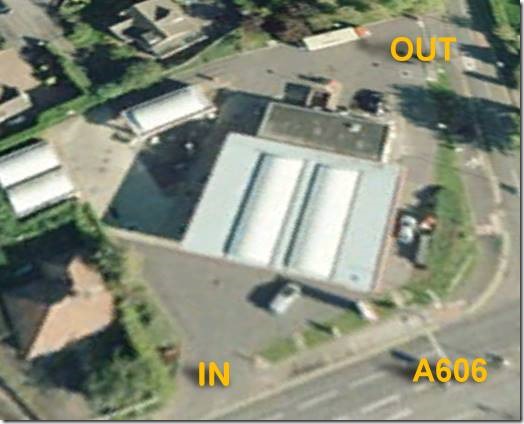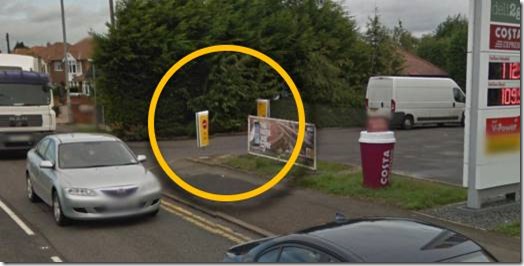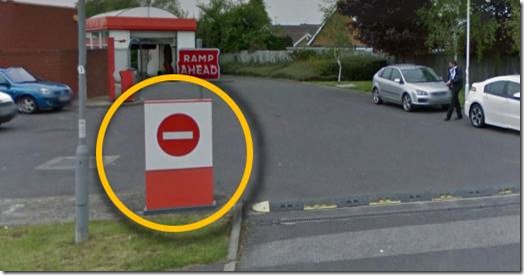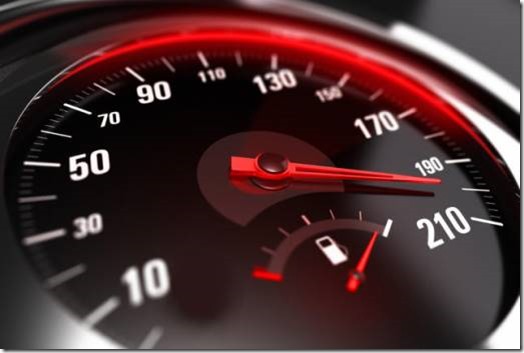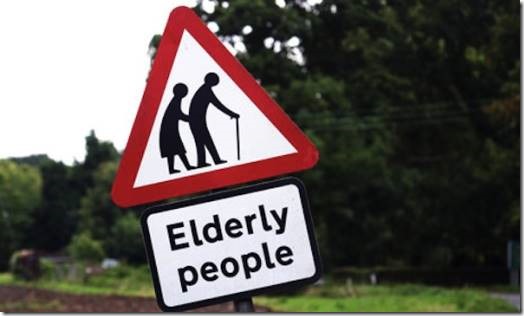Well, the “Desreen’s Law” petition is closing in on 200,000 signatures in less than a week! Let’s just look at a sample of some very important posts people have made.
My grandfather is 90 and still driving despite having early onset dementia. The family have tried to intervene, reason with him and spoken with his GP. At the moment there is very little anyone can do to stop him driving; he is so stubborn but nobody has the power to force him to stop…
my 90 year old father in law nearly killed a cyclist – he had very poor vision, was deaf and had slow reactions. He refused to surrender his licence as it was ‘his independence’. My neighbours 85 yr old mother demolished a garden wall and 2 other cars – she mistook the accelerator for the brake and I was on duty in A/E on the day an elderly driver killed a 2 year old boy and maimed his father by driving over a sea wall – again an automatic car and misjudgement with lack of reactions. Finally, my husband was ‘rear ended’ just 2 weeks ago by an 82 year old lady driver, still accelerating when she hit him. He was stationary in the road, indicating to turn right when clear. Her excuse for writing off her car and his was that she had been driving that road for nearly 50 years and “no-one usually stops there to turn right” (into our own driveway incidentally!). My husband still has whiplash. Each driver filled in a ‘tick box’ form by DVLA at 70 stating they were fit to drive…
I would sign this petition a thousand times over if I could. On the 22nd of December last year, my Dad was killed in a motorbike accident. A 90 year old male, had failed to see him when turning into a junction, and cross right in front of my Dad’s path, causing him to die instantly. After months of waiting and trials, he had his license taken from him and a suspended sentence. Because of his age they didn’t send him down. For myself and my family no sentence will ever be enough. I am the eldest of his four children, the youngest was 5 when it happened. He also left behind my mum, who hasn’t been the same since…
We just had an incident in Edinburgh where an OAP was reported driving 4 miles the wrong side of a local motorway narrowly missing 2 head on collisions and had absolutely no idea of the situation…
My own mother was a blustering older driver – with many recent minor accidents (all that could have been worse) – when I would ask her to consider giving-up driving – the response was anger and waffle about freedom – but when she declared she had MS – the DVLA said she would have to re-test – she quietly did not bother proceeding – leading me to make the conclusion she KNEW she was no longer ‘up to it’…
Our eight year old son was killed by a 74 year old driver who we believe was banned because he suffered epileptic fits and was trying out his friend’s new car. As no witnesses came forward his friend took the call, said he was driving and that our son was the one at fault…
My grandad passed when he was 96,but didnt give up the car until he was 90, he was still driving even when it would endanger him and others around him. In his mind, he was able and young, but his body was the opposite. After countless family disputes he eventually gave up the car, under the condition that my dad drove them to get shopping/appointments…
As an older driver I am well aware that my reactions are not what they were. I plan to stop driving in the New Year, I shall be 66…
Someone who I know was killed by an oap driving out of his drive onto a main road so I fully support this…
When my husband was diagnosed with dementia it was our responsibility to inform DVLA which we did, many don’t. Something has to be changed…
As a serving firefighter I have been to several incidents where the elderly driver has been at fault and killed themselves or others…
I’m signing because I am 66 and I am fully aware that my reactions are slowing down especially at night…
I work in Traffic Management and elderly drivers cause most of the problems due to poor sight and reactions…
As a GP it is often left to me to work out which older drivers are safe or not to drive. I have no special training for this task. Older people who are no longer fit to drive often lack insight into this and their families also collude with them on this issue in my experience… As age increases reaction times and awareness can decrease and so I believe that proper retesting is essential for the safety of everyone.
A friend of a friend died in a similar situation leaving behind a wife and a young child and dying too young…
I saw my Dad’s driving as he aged, and yes, he was a danger in his latter days. Older drivers must be tested for the their, and everyone else’s safety…
With the help of my brother and putting a lot a pressure on my dad’s GP, I got his driving licence taken away from him. He is 87 frail but then got a diagnosis of vascular dementia. I work in the memory clinic I knew he was no longer capable. It was a very difficult decision but I could not have forgiven myself if something like that had happened…
My best friends brother was killed while riding his bike home from work by an 89 year old driver. The consequences are devastating…
I had to stop my father from driving because of his condition (Vascular Parkinsonism). He was 86. Hardest thing I’ve ever had to do but I’d do it again in a heartbeat…
My husband and 2 daughters were nearly wiped out on the M4 motorway earlier this year. An elderly lady pulled out and caused my husband to make an evasive action…
I know two drivers who both have serious health problems and are determined to keep driving despite having had recent accidents…
I have a neighbor who as dementia and has had it for a year,he has still been driving,Just been assessed because of this,Been waiting weeks for the results,His wife a none driver has been going out with him,Due to family pressures and me speaking up about me concerns,He has stopped,But car is still outside the house,I believe he is 72…
In dec 2011 my mother was knocked down and seriously injured .. She spent 9 days on life support and a bleed to the brain .. Her calf muscle was ripped off her leg and she had to be given cpr as her heart stopped 3 times .. This happened because a car mounted the pavement and knocked her down .. The driver was 82 years of age and hit the accelerator instead of the brake on his Aston Martin!!!! .. He was fined £480 and banned for life .. My mother has to live with her injuries for the rest of her life…
An elderly driver fell asleep mounted the pavement injuring my son and sister in law. My mother in law was killed…
Ma family was killed on the A1 near Gosforth because an elderly driver went up the wrong way on the opposite carriage…
My mum-in-law has dementia. Dementia has robbed her of her reasoning abilities. I had to disable her car to stop her from driving. Neither the DVLA nor the GP would help…
Fortunately my neighbour escaped such a tragedy. An elderly man accelerated and mounted the pavement just outside her house where she was with her children. Thankfully it was only the wall he destroyed…
Regular readers will know that I have a strong opinion regarding older drivers and their frequently flawed self-assessment of their abilities. But I must say that even I was taken aback by the scale of the problem represented by these quotations. And these are just sampled from the first hundred or so posts made within the last two hours! There are thousands more.
My own father is now nearly 90. He suffers from macular degeneration and can hardly see properly at all anymore. About 15 years ago, when his condition wasn’t as advanced (though his eyesight was still seriously impaired), he wanted to go down to Portsmouth to see the tall ships. He asked if he could borrow my car – at the time he was still self-assessing himself as fit to drive, though he hadn’t actually driven since shortly after he retired. I refused point blank, which upset him. But then I found out he was planning to hire a van to drive down there (and to sleep in – all the hotels were fully booked). I told him straight that if he hired any vehicle I would immediately report him to the police! He didn’t go, and shortly after that he admitted to me that he had decided that he couldn’t see well enough and had decided not to renew his licence.
I’m sure I’m not the only one who can understand just how fine a line there was between him driving and not driving (or rather, attempting to drive) a 400 mile round trip. I shiver when I think how many times a similar scenario must get played out – and how many times the outcome will be different to the one involving my dad.
That’s why we need “Desreen’s Law”.
A handful of people commenting on the petition have said it is ageist.
This is soooo ageist, I dont want to sign it thank you…
I find this petition out of order and blaming elderly drivers when the percentage of accidents causing death is far higher among young inexperienced drivers…
These people are idiots. Really, they are. Young people causing problems because they are prats is not the same as old people causing problems because they are physically and mentally incapable of handling a car anymore. Nor does the fact that an elderly driver not being able to drive anymore, so your nan or grandpa won’t be able to come and see you as easily, make it a bad idea to introduce re-testing.
Some commenters have trotted out the old “re-test everybody” mantra. Although I personally wouldn’t have a problem with that, it would be physically impossible to implement. However, it side-steps the core issue of older drivers having health problems which are entirely age-related.

